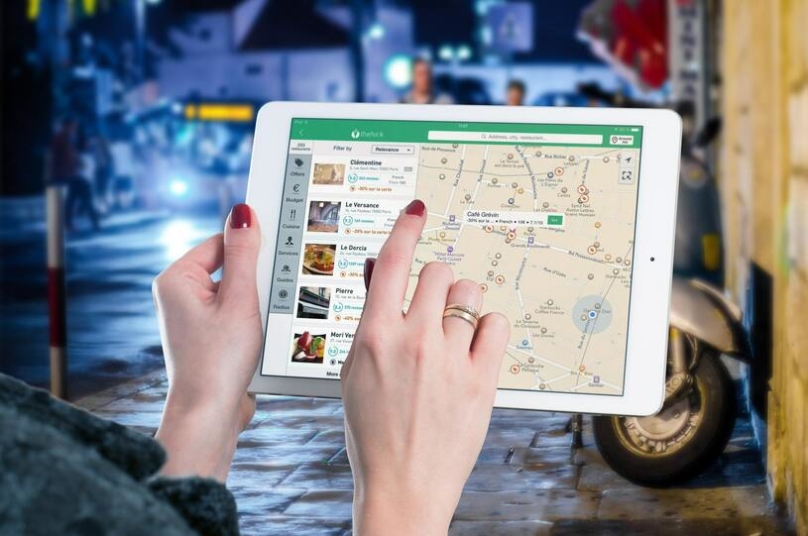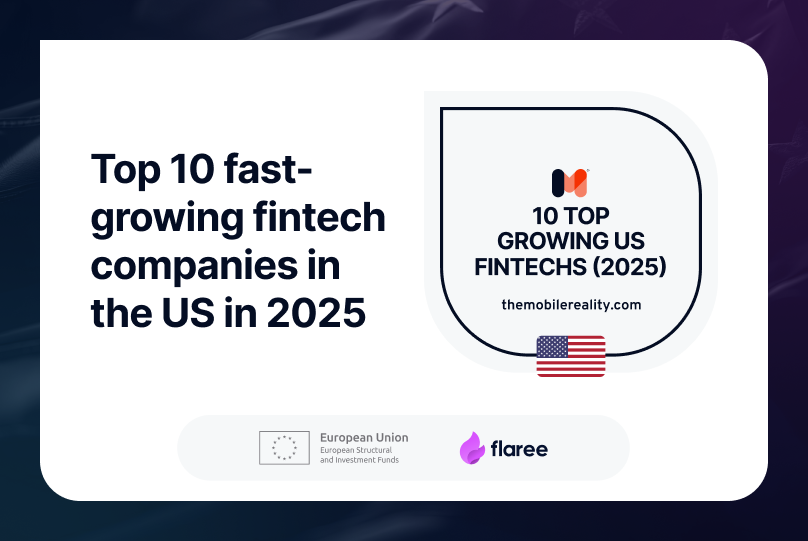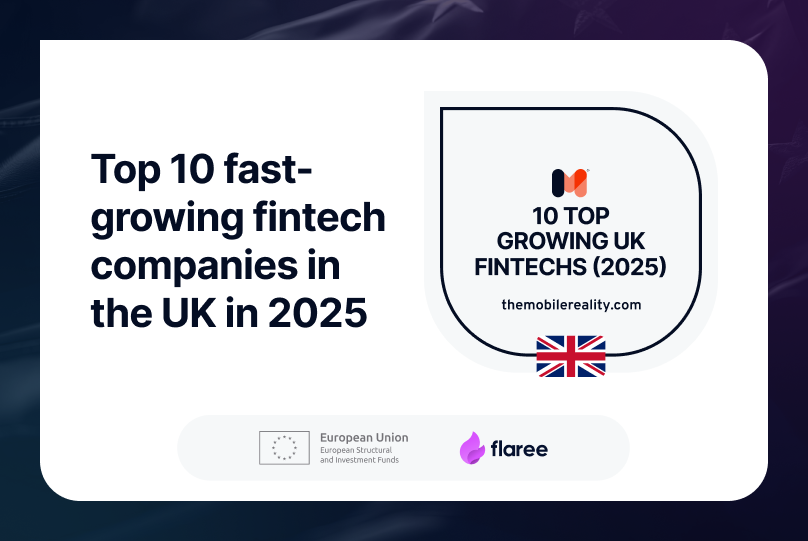Introduction
To achieve success with minimal risks and costs in an environment where 92% of launched startups are closed, each project should start with the launch of a minimally viable product. In this article, we will analyze the concept, types, and stages of building an MVP for fintech and modern banking.
According to a study by CB Insights, in 42% of cases, the reason for the failure of a startup is the lack of market demand. In almost half of the cases, entrepreneurs spend months or even years of work only to realize that the hypothesis was wrong, and no one is interested in their product.
The concept of MVP (Minimum Viable Product) is designed to minimize the risk of such a situation. It applies to the creation of any product but is more often used for the development of software and digital services.
The concept of MVP was introduced in 2001 by Frank Robinson, co-founder, and president of the SyncDev consulting firm. Robinson defines MVP as the result of "synchronous development" — simultaneous product development and research of the target audience, and its reaction to the product. MVP is a version of a future project that allows you to collect maximum practical data on how customers interact with it, at a minimal cost.
Differences between MVP and PoC
MVP is often confused with PoC — Proof of Concept — proof of concept correctness. These concepts are interrelated, but not equivalent. As PoC is: the reaction of potential customers to the announcement, the number of pre-orders, marketing, and sociological research, and other theoretical evidence that the future product is interesting to the market. MVP is more than proof, it is a workable product.
Differences between MVP and prototype
However, MVP is not a prototype. A minimally viable product contains only the most necessary functionality, but it should not be crude or primitive. On the contrary, the main function of the MVP should be performed as best as possible.
MVP Tasks
A minimum Viable Product is created not to test technologies, but to test in practice whether users need such a product and whether the hypotheses underlying the business model are correct. The main task of the MVP is to minimize the time and effort spent on testing the market reaction to the idea.
MVP allows you to attract real users to the project as guides who will help adjust the business model and basic characteristics of the future product, open-source directions and plan an updated roadmap. Positive results at the MVP stage give the green light for the development of a full version of the product.
MVP example
An illustrative example of MVP is WhatsApp which at the time of publication in 2009 had no functions for sending messages.
The creators of WhatsApp, Jan Koum and Brian Acton, proceeded from a simple idea — to create a mobile phone book that would show the status of a contact: available, busy, at a meeting, driving, in the gym, and so on. When users indicated the status, their contacts received a pop-up notification.
Soon, Kum and Acton noticed that users began to use statuses to communicate. Seizing on this idea, they released a new version of WhatsApp, which had more features related to sending messages. As a result, the small user base grew to 250,000 people in a matter of days, proving that the developers are on the right track.
Advantages of MVP
Thus, a minimally viable product allows:
confirm the viability of the idea and test hypotheses about the product using real data;
identify trends that can be used in the development of the full version of the product;
reduce the risk of major financial losses in the event of a failed product release;
reduce the cost of development by prioritizing important and identifying unclaimed functions;
speed up error detection and internal product testing;
build a user base before a full-scale launch;
to occupy a market niche and attract investors ahead of competitors.
Varieties of MVP
Among the numerous approaches to creating a Minimum Viable Product, there are three main approaches.
A product with a single parameter
The most common way to create an MVP has already been described using the example of WhatsApp. This is an application or program that performs one or two functions that are necessary to test the viability of your idea. If the main functionality of the application is not interesting to users, then it is pointless to continue investing in the development of forces, time, and resources.
Disparate MVP
This approach is used if the product idea can be implemented without developing unique software solutions, using a set of ready-made software.
Combining various tools into a single complex and developing original software makes testing a business idea labor—intensive and expensive. Sometimes it is worth moving to these stages of development after receiving feedback from users.
This is how the Groupon service was launched. At the start, it was just a primitive site based on open-source code. All Groupon services were provided by e-mail. Social functions, a full-fledged email newsletter, automation, a mobile application — all this was developed later when it became clear that collective purchases were in demand.
The Wizard of Oz and the concierge
These close varieties of Minimum Viable Products imply the rejection of long and expensive development in favor of manual labor.
The hero of the Frank Baum fairy tale (Lyman Frank Baum) portrayed himself as a wizard, and the MVP of this type pretend to be full-featured services and applications. In fact, instead of algorithms, the Minimum Viable Product is provided by people.
The Wizard of Oz does not advertise this fact. This is what the founder of Zappos, a large American online store, did. To make sure of the viability of the idea, he started selling long before he automated orders and even rented warehouses. Nick Swinmurn personally served the first customers by purchasing discounted goods at retail and reselling them.
The difference between products built on the concierge model is that they are openly positioned as providing services to real people, and use this fact as one of the competitive advantages.
Matt Sadowski
CEO of Mobile Reality
Fintech Software Development Tailored to Your Needs
We specialize in delivering reliable and compliant software solutions for the financial industry, designed to meet your specific requirements.
Comprehensive development for fintech systems and financial services.
Secure and scalable solutions built to industry standards.
Expertise in compliance with financial regulations.
Support for digital banking, payments, and data analytics.
Customized fintech AI agents to streamline your operations.
Building an MVP for fintech: A Step-by-Step Guide
To launch a minimally viable product, it is necessary to go through eight preparatory stages. The first four steps are aimed at preliminary clarification of the business idea. The fifth and sixth stages relate to product design, and only at the seventh and eighth points will it come directly to development and testing.
1. Formulate the task
Each financial service is designed with a specific purpose in mind, prioritizing the needs of the user rather than solely focusing on generating profits. By adopting a client-centric approach, we aim to understand what the user truly requires from the product.
Once we have grasped the essence of their needs, we gain insight into the purpose and value of the financial service for the user. For instance, introducing a platform for convenient access to short-term loans resolves a common challenge faced by individuals - providing them with a hassle-free means to secure immediate financial assistance when needed.
2. Identify the audience and highlight its core
When designing an MVP for a financial service, it is crucial to narrow down the target audience to ensure accurate product orientation. Formulating a portrait of the "ideal" user, someone who would readily adopt your solution and be satisfied with its capabilities, is essential.This user profile typically includes details such as age, education level, income, habits, interests, and hobbies. Understanding how well the product aligns with the needs of the target user will be beneficial during the advertising and promotion stages. For instance, if developing a personal finance management app, the ideal user might be a tech-savvy individual in their late 20s to early 30s, with a college education, seeking an intuitive and comprehensive tool to track expenses, set budgets, and achieve financial goals.
3. Study your competitors
Even if your financial service introduces something innovative, there are likely already companies operating in the chosen industry. It is crucial to thoroughly study their experiences, advantages, and disadvantages. Analyze their market share, understand why customers are attracted to them, and identify what makes them unique. This research will aid in refining your MVP. For example, if developing a budgeting app, studying competitors.
Intuit Mint

Intuit Mint is a popular personal finance management app that offers users a comprehensive set of tools to track and manage their finances. With Mint, users can link their bank accounts, credit cards, and bills to get a real-time view of their financial transactions and account balances. The app categorizes expenses, creates budgets, and provides personalized insights and recommendations to help users make informed financial decisions. Mint also offers features like bill reminders, credit score monitoring, and goal setting, making it a user-friendly and all-in-one solution for personal finance management.
YNAB

YNAB is a budgeting software and app that focuses on helping users gain control of their finances and build better money management habits. YNAB employs a unique methodology that encourages users to give every dollar a job, allocating funds to specific categories and goals. The app provides a clear overview of income, expenses, and savings, and offers tools for tracking spending, setting financial goals, and saving for the future. YNAB emphasizes proactive budgeting and guides users towards breaking the cycle of living paycheck to paycheck.
PocketGuard

PocketGuard is a mobile app designed to simplify personal finance management and budgeting. The app allows users to connect their bank accounts, credit cards, and bills, providing a consolidated view of their financial information in one place. PocketGuard automatically categorizes expenses, tracks spending patterns, and helps users set realistic budgets. It provides insights into saving opportunities and alerts users to potential overspending. PocketGuard's intuitive interface and simplicity make it a convenient tool for individuals seeking to track and manage their finances on-the-go.
It can provide insights into their features, user experience, and monetization strategies.
4. Perform a SWOT analysis
Utilize a SWOT analysis, a strategic planning tool used by large companies, to identify the strengths, weaknesses, opportunities, and threats of your financial service's MVP. This analysis helps in making informed management decisions and shaping business policies.Evaluate the strengths and weaknesses of your product compared to competitors, identify opportunities for growth and differentiation, and anticipate potential threats to its success. For instance, the strengths of a robo-advisory investment platform MVP could include low fees, intuitive user interface, and algorithm-based portfolio optimization, while a potential weakness might be limited investment options compared to established brokerage firms.
5. Make a path map
From the user's perspective, map out the sequence of actions they will take to achieve their desired outcome using your financial service. The path map should prioritize simplicity, convenience, and efficiency. By understanding the user's interaction with the future application, you can determine when to provide additional information, where to include hints, and how to optimize the interface.For example, in the case of an online mortgage comparison platform, the user's path map would involve steps such as entering their financial information, selecting desired loan parameters, comparing offers from various lenders, and ultimately applying for a mortgage with their preferred choice.
6. Identify the main functions to implement and calculate the volume of MVP
List and prioritize the main functions of your financial service for the MVP. Focus on features that directly align with the primary purpose of the product. Avoid adding unnecessary complexities or features that can confuse users and undermine the reliability of your research results. Additional features can be incorporated in later iterations based on user feedback.For a personal investment tracking app, the main functions of the MVP could include portfolio tracking, real-time market data, performance visualization, and goal tracking for investment growth.
7. Choose the appropriate methodology and develop an MVP
Select a suitable development methodology for creating the MVP of your financial service. Iterative approaches such as Lean, Scrum, Kanban, or extreme programming are ideal for establishing regular updates and continuous improvement based on user feedback. The choice of methodology depends on the preferences of the development team and the specific requirements of your project.
8. Test the product
A minimally viable product requires regular testing throughout development. Alpha testing is carried out within the team by testers, but beta testing will require the help of outsiders. It's good if it will be people from among future users. Those who want to participate in the test can be found on sites such as BetaList, ProductHunt, Reddit, and Quora or attract through their communication channels: social networks, blogs, and email newsletters.
The main task of testing will be the technical improvement of the MVP. Before the release, the product must work without errors, so that technical problems do not prevent users from evaluating its functionality.
Launching a minimally viable product
For the project team, the work is just beginning. From the moment of launch, it is necessary to collect, save and analyze feedback, starting with statistics and ending with data on user behavior and feedback. This information is what everything was started for.
The data collected with the help of MVP will allow you to understand whether the project has prospects, help generate new ideas, and develop a product development strategy based not on assumptions, but facts. Thus, MVP testing will fully justify itself.
Our experience allows us to evaluate the data received and analyze feedback from customers. We understand that launching an MVP, testing a product, and processing feedback are complex and costly tasks that require a professional approach.
If you are launching a new product and don't know where to start, contact us and we will help you implement your project.
Fintech and Financial Software Development Insights
Are you intrigued by the rapidly evolving world of fintech and financial software development? At Mobile Reality, we take pride in our extensive knowledge and experience in this dynamic field. We navigate complex challenges, implement innovative strategies, and develop groundbreaking solutions in fintech. Our carefully curated selection of articles offers in-depth perspectives on key aspects of fintech and financial software development:
- Top Fintech Conferences That You Cannot Miss in 2025
- Leveraging Blockchain for Fintech: A Look Ahead to 2025
- Top 5 Wealth Management Solutions in 2025
- Top 10 Best Investment Apps for Business in the US
- AML KYC Simplified: Best Practices for Fintech Apps
- What is Open API Banking and How Does it Work?
- Fintech Week NYC: Key Trends and Transformations
- Digital Product Design for Fintech Market
- Top Investment Apps in Europe in 2024
- TOP 10 KYC & AML software companies in 2023
- The Future of Financial Services: AI for Fintech
- Explore the Future of Fintech App Development in 2025
Explore these comprehensive resources to deepen your understanding of the fintech sector. If you have any questions or are interested in exploring partnership opportunities in fintech software development, please contact our sales team. For those aspiring to join our innovative team, visit our careers page to submit your CV. Join us in driving the future of fintech and financial software development!





